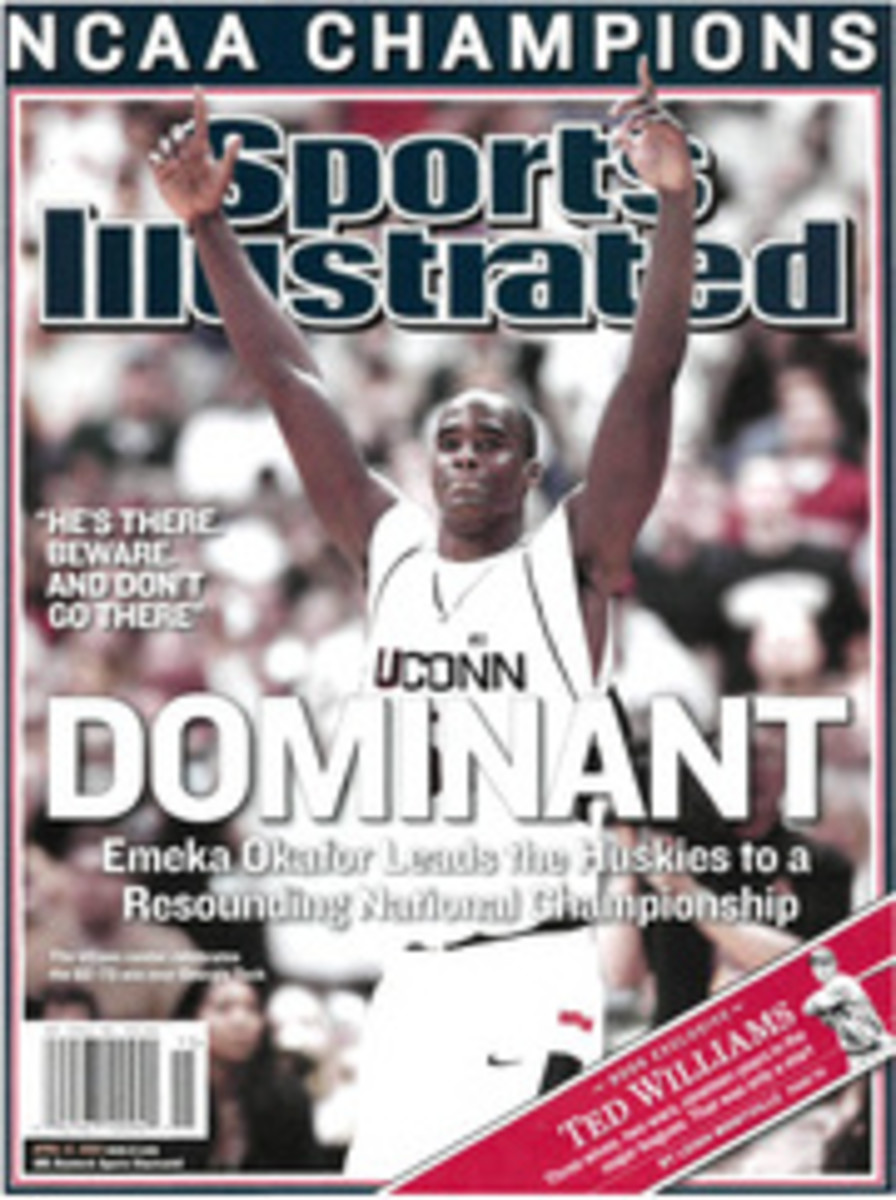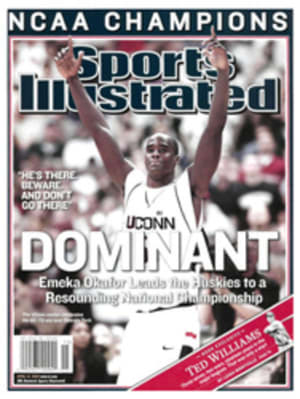
Football Magic For the author, following Georgia Tech's mighty gridiron team was a thrill
Since I left my home state, its largest city has hosted an
Olympics and won a World Series. But New York and California can
say that. Those states never had a football program like Georgia
Tech's in the '50s, when I was growing up: Bobby Dodd's Yellow
Jackets, whose wizardry I savored through a medium, now long
defunct, that was cooler than TV. ¶ At an early age I knew I
would not be an engineer. So I would not go to Tech but rather,
presumably, the University of Georgia. It seemed so wrong. UGA
was Wally Butts, who was about as subtle as his name implied.
Tech football was "Dodd's luck." Dodd had small, gentlemanly
players who were required to take calculus. Sometimes in practice
they played volleyball--scrimmage bored Dodd. And yet they were a
(lighthearted) juggernaut. From 1951 to '53 they went 29-2-2. For
six straight years they went to a major bowl and won. Larry
Morris, from my hometown of Decatur, was a '53 consensus
All-America and a lifeguard at the local swimming pool. Six Tech
players made All-America '52: Pete Brown, Leon Hardeman, Bobby
Moorhead, Hal Miller, George Morris, Buck Martin. Appropriately,
in the grind-it-out Southeastern Conference of that era, most of
these stalwarts were blockers and tacklers. Dodd loved to
quick-kick on any down and wait for an opening.
"Opportunistic," his teams were called. In the 1956 Sugar Bowl,
over loud protestations from Georgia's governor and legislature,
Tech had the temerity to take the field against Pitt, which had a
black player, Bob Grier. No white Southern team had done such a
thing in the South. "A lot of coaches told me," said Dodd, "'If
anybody can break the racial thing, y'all can.'" A step forward,
anyway. Pitt rushed for 217 yards to Tech's 142 and passed for 94
to Tech's 0. When Grier was hurt, Tech players helped him off the
field. Tech won 7-0. "I guess we do win a lot of games when the
other team does most of the moving," said Dodd.
When the Yellow Jackets would get the ball in close, they'd
pounce, confounding the foe with Dodd's "belly series." A wily
quarterback--Darrell Crawford, Pepper Rodgers, Wade Mitchell,
Toppy Vance--would stick the ball into the belly of a running
back, most notably the diminutive, quicksilver Hardeman or Billy
Teas, and accompany him for a step or two, until the defense
committed, then either leave the ball with him or keep it, pitch
out or (once in a while) pass.
This I knew vividly, even though the games weren't televised,
because I studied the big plays through the medium mentioned
above. In the Sunday Atlanta Journal-Constitution after a game,
the copious sports section teemed with photographic sequences.
HARDEMAN'S DAZZLING 28-YARD RUN ON SCREEN PASS PLAY SETS UP
TECH'S FIRST TD would be the headline, over two rows of maybe 12
long-range shots that captured the play forever, with dotted
lines for the ball's course in the air and a solid line for the
carrier's zigzags. You could see a blocker bearing in on a
defender in one frame, the defender bumped and the runner making
his cut in the next, and on and on. As jerky-fluid as break
dancing, as historical as a Civil War map. Or one panoramic shot
might encompass a punt and its return--all 22 players in medias
res, the ball circled in the air and lines showing what happened
theretofore and thereafter. Televised highlights, even in slo-mo,
go by too fast. When you've got serial stills or one frozen
tableau to dwell on, you can fill in the blanks and make the play
flicker over and over.
Recently I went back to my hometown library and found those old
plays on microfilm. SHARP-EYED LARRY MORRIS TYPIFIES TECH'S ALERT
PLAY BY GRABBING AUBURN FUMBLE. Eight installments, with a terse
caption under each: "Bounding Ball Attracts Attention." "Larry
Gets There First."
"What mad pursuit? What struggle to escape?" exclaimed Keats,
pondering the action immortalized on a Grecian urn. I was back
rerunning with the Rambling Wreck, "Forever panting, and forever
young."
Roy Blount Jr.'s 17th book, a bio of Robert E. Lee, was published
last May. He's a regular on NPR's Wait Wait ... Don't Tell Me!
COLOR ILLUSTRATION: ILLUSTRATION BY JOE CIARDIELLO

